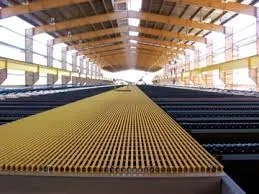
-
 Afrikaans
Afrikaans -
 Albanian
Albanian -
 Amharic
Amharic -
 Arabic
Arabic -
 Armenian
Armenian -
 Azerbaijani
Azerbaijani -
 Basque
Basque -
 Belarusian
Belarusian -
 Bengali
Bengali -
 Bosnian
Bosnian -
 Bulgarian
Bulgarian -
 Catalan
Catalan -
 Cebuano
Cebuano -
 China
China -
 China (Taiwan)
China (Taiwan) -
 Corsican
Corsican -
 Croatian
Croatian -
 Czech
Czech -
 Danish
Danish -
 Dutch
Dutch -
 English
English -
 Esperanto
Esperanto -
 Estonian
Estonian -
 Finnish
Finnish -
 French
French -
 Frisian
Frisian -
 Galician
Galician -
 Georgian
Georgian -
 German
German -
 Greek
Greek -
 Gujarati
Gujarati -
 Haitian Creole
Haitian Creole -
 hausa
hausa -
 hawaiian
hawaiian -
 Hebrew
Hebrew -
 Hindi
Hindi -
 Miao
Miao -
 Hungarian
Hungarian -
 Icelandic
Icelandic -
 igbo
igbo -
 Indonesian
Indonesian -
 irish
irish -
 Italian
Italian -
 Japanese
Japanese -
 Javanese
Javanese -
 Kannada
Kannada -
 kazakh
kazakh -
 Khmer
Khmer -
 Rwandese
Rwandese -
 Korean
Korean -
 Kurdish
Kurdish -
 Kyrgyz
Kyrgyz -
 Lao
Lao -
 Latin
Latin -
 Latvian
Latvian -
 Lithuanian
Lithuanian -
 Luxembourgish
Luxembourgish -
 Macedonian
Macedonian -
 Malgashi
Malgashi -
 Malay
Malay -
 Malayalam
Malayalam -
 Maltese
Maltese -
 Maori
Maori -
 Marathi
Marathi -
 Mongolian
Mongolian -
 Myanmar
Myanmar -
 Nepali
Nepali -
 Norwegian
Norwegian -
 Norwegian
Norwegian -
 Occitan
Occitan -
 Pashto
Pashto -
 Persian
Persian -
 Polish
Polish -
 Portuguese
Portuguese -
 Punjabi
Punjabi -
 Romanian
Romanian -
 Russian
Russian -
 Samoan
Samoan -
 Scottish Gaelic
Scottish Gaelic -
 Serbian
Serbian -
 Sesotho
Sesotho -
 Shona
Shona -
 Sindhi
Sindhi -
 Sinhala
Sinhala -
 Slovak
Slovak -
 Slovenian
Slovenian -
 Somali
Somali -
 Spanish
Spanish -
 Sundanese
Sundanese -
 Swahili
Swahili -
 Swedish
Swedish -
 Tagalog
Tagalog -
 Tajik
Tajik -
 Tamil
Tamil -
 Tatar
Tatar -
 Telugu
Telugu -
 Thai
Thai -
 Turkish
Turkish -
 Turkmen
Turkmen -
 Ukrainian
Ukrainian -
 Urdu
Urdu -
 Uighur
Uighur -
 Uzbek
Uzbek -
 Vietnamese
Vietnamese -
 Welsh
Welsh -
 Bantu
Bantu -
 Yiddish
Yiddish -
 Yoruba
Yoruba -
 Zulu
Zulu
Fiberglass Solutions for Effective Sewage Treatment and Environmental Protection Systems
The Role of Fiberglass in Sewage Treatment A Modern Solution
Sewage treatment is an essential aspect of environmental management that focuses on the removal of contaminants from wastewater. As urbanization and industrial activities increase, the demand for efficient and effective sewage treatment methods has never been higher. One emerging solution that has garnered attention is the use of fiberglass in sewage treatment systems. This article explores the benefits, applications, and innovations associated with fiberglass in the context of wastewater management.
The Role of Fiberglass in Sewage Treatment A Modern Solution
One significant application of fiberglass in sewage treatment is in the construction of septic tanks and holding tanks. These tanks play a crucial role in the initial stages of wastewater treatment by collecting and separating solids from liquids. The lightweight nature of fiberglass makes for easier transportation and installation, enabling quicker setup in both residential and commercial settings. Additionally, fiberglass tanks are less prone to cracking or leaking, ensuring that contaminants do not seep into the surrounding soil or groundwater.
sewage treatment fiberglass

Furthermore, fiberglass is increasingly being utilized in the development of biofilter systems, which are critical for enhancing the treatment process. Biofilters work by promoting the growth of microorganisms that break down organic matter in wastewater. Fiberglass media provides an ideal surface for these microorganisms to thrive, improving the efficiency of the treatment process. Since fiberglass is highly resistant to chemical breakdown, it can maintain consistent performance over time, providing reliable treatment for a variety of wastewater types.
Another exciting innovation involving fiberglass in sewage treatment is the implementation of fiberglass-reinforced polymer (FRP) structures. These structures can be engineered to withstand significant stress and adverse environmental conditions. In situations where space is limited, such as urban areas, FRP can be fabricated into compact designs that optimize land use while maintaining treatment effectiveness.
Moreover, the integration of fiberglass with advanced technologies, such as membrane bioreactors (MBR) and ultrafiltration systems, is revolutionizing sewage treatment. These technologies allow for higher levels of contaminant removal, producing effluent that meets stringent discharge standards. The combination of fiberglass’s structural advantages with these cutting-edge technologies enhances both the efficiency and environmental sustainability of sewage treatment processes.
In summary, the use of fiberglass in sewage treatment presents numerous benefits, including longevity, reduced maintenance, and improved efficiency. As environmental concerns become increasingly pressing, adopting advanced materials like fiberglass can lead to more sustainable wastewater management solutions. By investing in these modern approaches, communities can ensure cleaner waterways and a healthier environment for future generations. As innovations continue to emerge, the role of fiberglass in sewage treatment is likely to expand, paving the way for a cleaner, more sustainable future.









